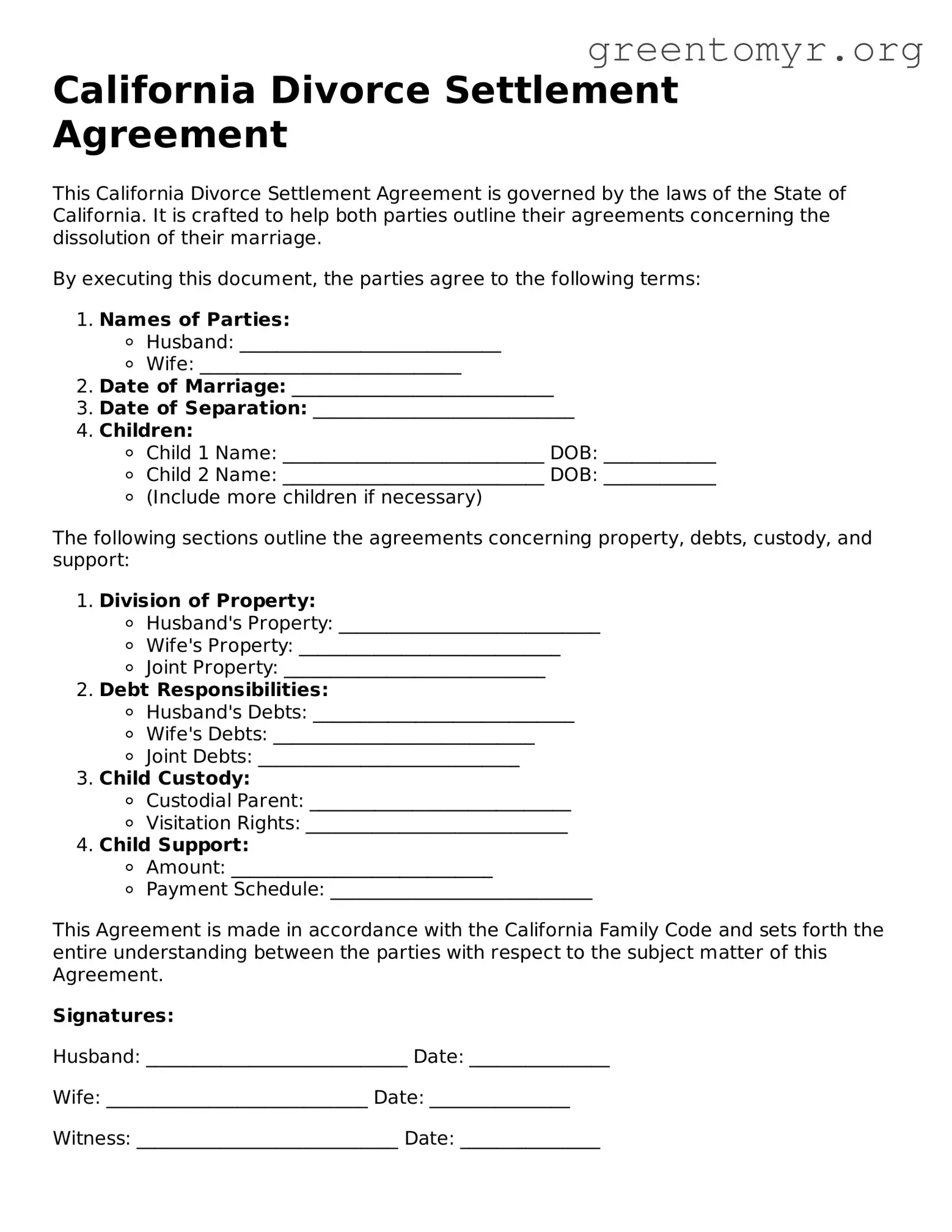California Divorce Settlement Agreement
This California Divorce Settlement Agreement is governed by the laws of the State of California. It is crafted to help both parties outline their agreements concerning the dissolution of their marriage.
By executing this document, the parties agree to the following terms:
- Names of Parties:
- Husband: ____________________________
- Wife: ____________________________
- Date of Marriage: ____________________________
- Date of Separation: ____________________________
- Children:
- Child 1 Name: ____________________________ DOB: ____________
- Child 2 Name: ____________________________ DOB: ____________
- (Include more children if necessary)
The following sections outline the agreements concerning property, debts, custody, and support:
- Division of Property:
- Husband's Property: ____________________________
- Wife's Property: ____________________________
- Joint Property: ____________________________
- Debt Responsibilities:
- Husband's Debts: ____________________________
- Wife's Debts: ____________________________
- Joint Debts: ____________________________
- Child Custody:
- Custodial Parent: ____________________________
- Visitation Rights: ____________________________
- Child Support:
- Amount: ____________________________
- Payment Schedule: ____________________________
This Agreement is made in accordance with the California Family Code and sets forth the entire understanding between the parties with respect to the subject matter of this Agreement.
Signatures:
Husband: ____________________________ Date: _______________
Wife: ____________________________ Date: _______________
Witness: ____________________________ Date: _______________
It is recommended that both parties seek independent legal advice before executing this Agreement to ensure that their rights and interests are fully protected.
